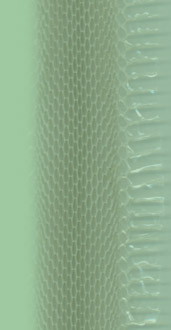









 |
 |
 |
 |
 |
 |

Introduction:
The genus Dasypeltis is a widely distributed group of snakes that occur, with the exception of deserts, all over Africa and in the southern part of the Arabian Peninsula. There are nineteen species and one subspecies of which I will give a summarizing description here. This will be complemented by personal experiences with their keeping and breeding.
I am presently keeping two species, which I have also bred repeatedly (Dasypeltis scabra and D. fasciata). I also used to keep Dasypeltis atra (for about 3 years), Dasypeltis gansi (for 1 year), Dasypeltis inornata (for 20 Years) and Dasypeltis m. medici (for 10 years). Unfortunately I never managed to get these two species (D. atra and D. m. medici) to breed.
Even today it is still difficult to distinguish the species from each other, which is partly due to the very large range of D. scabra and its great variability in color and pattern. Especially D. scabra is therefore often confused with the other species occurring within its range. I once received a picture from somebody who wanted to convince me that the (patterned) snake in the photo was a D. inornata. After intense literature research and a personal conversation with a South African herpetologist, I can now state that D. inornata has no pattern.
I have also heard talk about a „West African“ D. inornata, but this snake only occurs in South Africa!
The answer to the most important question first:
Yes, Dasypeltis feed ONLY on (whole) bird eggs, and will never drink a cracked egg from a bowl. I tried this once and some of my hatchlings died overnight because they couldn't, how shall I put it, "bite off" the liquid egg and choked on it! It is important that one always has the correct egg size available. The snakes take eggs of finches, parakeets and quails as well as chicken eggs up to size XL, obviously depending on the size of the snake.
It has been said more then once that they would also feed on reptile eggs, and Mr. Bienstein describes his personal experience about that on his former homepage. You should not think that this opens up a new source of eggs, though! It would be rather difficult to convince lizard keepers to donate their eggs as food for our snakes, and lizards in general do not produce eggs in numbers that would make it worthwhile breeding them on a sideline.


